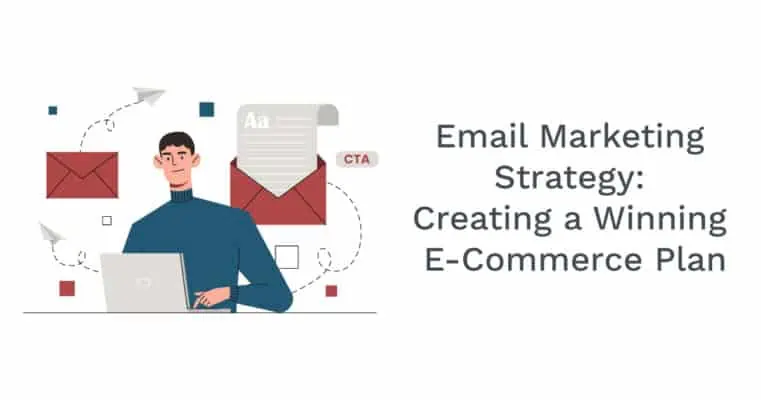Best Ecommerce Email Marketing Strategies Creating a Winning E-commerce Plan
One of the best marketing campaign for e-commerce businesses is guide to ecommerce email marketing platform. By leveraging the power of every email, businesses can effectively communicate with their customers, promote their products or services, and ultimately drive sales. To achieve the best results, it is important to craft compelling and engaging emails that resonate with the audience. Creating the best email marketing messages requires a deep understanding of the target market and segmentation to personalize the content one email marketing automation. E-commerce emails should be visually appealing, featuring high-quality images and concise yet informative text. It is crucial to establish a consistent schedule to send an email, whether it is through a weekly email newsletter, promotional updates, or trigger emails based on customer behavior. An effective content marketing email sequence can consist of a welcome email, followed by educational or informative emails strategy, and then promotional emails. By implementing these strategies, businesses can greatly improve their email marketing and generate more conversions for their ecommerce store.

1. Introduce about Email Marketing Campaign Type
In the fast-paced world of ecommerce, build an email marketing has emerged as a powerful tool to engage customers, drive sales, and build long-lasting relationships. With millions of online businesses vying for attention, a well-crafted email marketing channel can make all the difference in achieving success. This article dives into the essential components of an effective marketing plan, providing insights and actionable tips to help you create an email automation that delivers results.
2. The Importance of E-commerce Email Marketing for Ecommerce Business
Email marketing is an essential tool for businesses to communicate with their customers and promote their products or services. Email marketing is one of the main reasons why email marketing is important is its cost-effectiveness. Compared to other marketing methods such as direct mail or print advertising, sending emails is relatively inexpensive. It allows businesses to reach a large number of commerce customers at a fraction of the cost. In addition, unlike traditional advertising methods, email marketing allows businesses to personalize their messages and target specific groups of customers. This makes it more effective in driving customer engagement and conversions. Furthermore, email marketing provides businesses with valuable insights and data about customer behavior. By analyzing open the email rates, click-through rates, and conversion rates, businesses can gain a better understanding of their customers’ preferences and tailor their email marketing service accordingly. Overall, email marketing is a powerful tool that can help businesses build strong relationships with their customers, drive sales, and ultimately grow their business.
Email marketing remains a cornerstone of digital marketing, even in the era of social media and instant messaging. It offers a direct and personalized channel to communicate with customers, delivering targeted messages that resonate with their needs and preferences. Unlike social media algorithms, email allows you to control the conversation and reach customers at their convenience, making it a highly effective marketing tool.
3. The Role of Email Campaign Marketing in E-commerce Best Practice
Email marketing plays a crucial role in the success of a business. With the growing number of online shoppers, email addresses provides a direct and personalized communication channel with customers. It allows businesses to reach out to potential and existing customers with relevant and tailored messages. By utilizing email marketing, ecommerce businesses can build customer loyalty, increase brand awareness, and ultimately drive sales. Through email campaigns, businesses can send promotional offers, announce new products or services, and provide updates on order status and delivery. Moreover, email marketing provides valuable data and insights into customer behavior and preferences, which can be used to further optimize marketing strategies. With the ability to segment email lists based on demographics, purchase history, and interests, businesses can deliver highly targeted messages that are more likely to resonate with recipients. Overall, email service provider marketing is an essential tool for ecommerce businesses to engage and retain customers, boost conversion rates, and maximize their revenue potential.
In the realm of e-commerce, email marketing plays a vital role in driving traffic, nurturing leads, converting sales, and fostering customer loyalty. It allows businesses to reach customers at different stages of the buyer’s journey, providing relevant information, product updates, and exclusive offers. By leveraging email marketing, e-commerce businesses can create a seamless and personalized customer experience that sets them apart from the competition.
4. Overview of Ecommerce Type of Email Marketing Strategy
To create a winning e-commerce email marketing guide tool, it’s crucial to have a clear understanding of your goals and objectives. Let’s explore the key steps involved in developing a robust strategy:
4.1 Setting Goals and Objectives
Before diving into the tactical aspects of email marketing, it’s essential to define your e-commerce goals. Are you looking to increase sales, boost customer engagement, or enhance brand awareness? Once your goals are established, it’s important to set specific objectives that align with your overall e-commerce strategy.
4.2 Building a Quality Email List
A quality email list forms the foundation of a successful email marketing campaign. It’s crucial to implement strategies that capture the right audience and continuously grow your subscriber base. Consider implementing opt-in opportunities, leveraging lead magnets, and segmenting your email list based on customer preferences and behaviors.
4.3 Crafting Compelling Email Content
Compelling email content is the key to engaging subscribers and driving action. From attention-grabbing subject lines to valuable and engaging email copy, every element should be carefully crafted to captivate your audience. Personalization, customization, and storytelling techniques can further enhance the effectiveness of your email subject line.
4.4 Designing Effective Email Templates
A well-designed email template ensures that your messages are visually appealing, optimized for different devices, and consistent with your brand identity. Responsive and mobile-friendly designs, along with strategic placement of call-to-action buttons, can significantly improve click-through and conversion rates.
4.5 Automating Email Campaigns
Automation simplifies the process of delivering personalized messages at scale. Welcome emails, cart abandonment sequences, and re-engagement campaigns can all be automated to nurture leads and drive conversions. By setting up triggered emails based on user actions, you can provide relevant and timely communication to your customers.
4.6 Testing and Optimization
A data-driven approach is essential for optimizing your email marketing software. A/B testing and split testing allow you to experiment with different elements of your campaigns and identify the most effective strategies. By analyzing key metrics such as open rates, click-through rates, and conversion rates, you can continuously refine and improve your email marketing efforts.
4.7 Leveraging Personalization and Segmentation
Personalized email and segmentation take email marketing to the next level. By tailoring your’s based on customer preferences, demographics, and make a purchase history, you can deliver highly relevant content that resonates with each individual recipient. Dynamic content and personalized recommendations further enhance the personalization aspect.
4.8 Email Deliverability and List Hygiene
Ensuring high deliverability rates and maintaining a clean email list are crucial for the success of your email campaigns. Implementing best practices to manage bounce rates, handle spam complaints, and regularly clean your list will help you maintain a positive sender reputation and maximize the reach of your emails.
4.9 Integrating Social Media and User-generated Content
Integrating your email marketing with social media channels can amplify your reach and engage a broader audience. Encouraging social sharing, showcasing user-generated content inemails, and creating social proof and FOMO (fear of missing out) can boost the effectiveness of your email campaigns.
4.10 Leveraging Data and Analytics
Data and analytics play a vital role in optimizing your email marketing campaign. By tracking and measuring email performance, you can gain valuable insights into your subscribers’ behavior and preferences. Utilizing customer data for personalization and analyzing customer insights can guide strategic decisions and drive better results.
4.11 Compliance and Privacy Considerations
In an era of increasing data privacy regulations, it’s crucial to ensure compliance and safeguard customer data. Obtaining consent, implementing opt-out and unsubscribe options, and following legal regulations are essential steps to build trust and protect your customers’ privacy.
4.12 Nurturing Customer Relationships
Email marketing is not just about driving sales; it’s also about building long-term relationships with your customers. Focus on building trust, engaging with customers throughout their buying journey, and implementing customer retention strategies to foster loyalty and repeat business.
4.13 Promoting Cross-selling and Upselling
Emails provide an excellent opportunity to promote cross-selling and upselling. By recommending relevant products and accessories based on customer preferences and purchase history, you can increase average order value and maximize revenue. Post-purchase follow-ups can also drive repeat purchases and customer satisfaction.
4.14 Measuring Success and ROI
To evaluate the effectiveness of your e-commerce email marketing campaign it’s essential to track key metrics and calculate return on investment (ROI). Metrics such as open rates, click-through rates, conversion rates, and revenue generated can provide insights into the impact of your campaigns. Regular evaluation and refinement of your strategy based on these metrics are crucial for long-term success.
5. Conclusion Transactional Email with Marketing Automation
Developing a winning marketing emails requires careful get started with email, execution, and continuous optimization. By setting clear goals, building a quality email list, crafting compelling content, and leveraging automation and personalization, you can engage customers, drive sales, and build strong relationships. Remember to keep a close eye on metrics, comply with privacy regulations, and nurture customer loyalty. With a well-defined strategy in place, you’ll be well-positioned to thrive in the competitive world of e-commerce. Learn from real-life examples to improve your email campaigns. And to get successfull you need to looking for a dropship supplier agent to help you sourcing winning products with the good quality and stable shipping time.

6. FAQs about Use Email marketing for E-commerce Email Marketing Strategy
1. How often should I send emails to my subscribers?
The frequency of email sending depends on your audience and the nature of your business. It’s important to find the right balance between staying top-of-mind and avoiding overwhelming your subscribers. Test different frequencies and monitor engagement metrics to determine what works best for your audience.
2. Can I use purchased email lists for my campaigns?
It’s highly recommended to avoid using purchased email lists. These lists often contain outdated or irrelevant contacts, which can harm your sender reputation and deliverability. Instead, focus on organically growing your email list by implementing opt-in strategies and providing value to your subscribers.
3. How can I improve email open rates?
To improve open rates, craft compelling subject lines that grab attention and create curiosity. Personalization, using the recipient’s name, can also make your emails more appealing. Additionally, segmenting your email list and sending targeted content to specific audience segments can increase relevance and engagement.
4. How do I handle unsubscribes?
Unsubscribes are a natural part of email marketing, and it’s essential to make the process easy for subscribers. Include clear and visible unsubscribe links in your emails and promptly honor opt-out requests. Respect your subscribers’ choices, as it helps maintain a positive brand image and ensures compliance with privacy regulations.
5. What are some best practices for email design?
When designing your emails, prioritize responsive and mobile-friendly layouts to ensure they display correctly on different devices. Use consistent branding elements, such as colors and fonts, to maintain brand recognition. Additionally, optimize your email design for quick scanning and include clear call-to-action buttons to drive click-throughs.

Pingback: The Best Email Marketing Software For Ecommerce [2024] - Dropship Ninja Guide